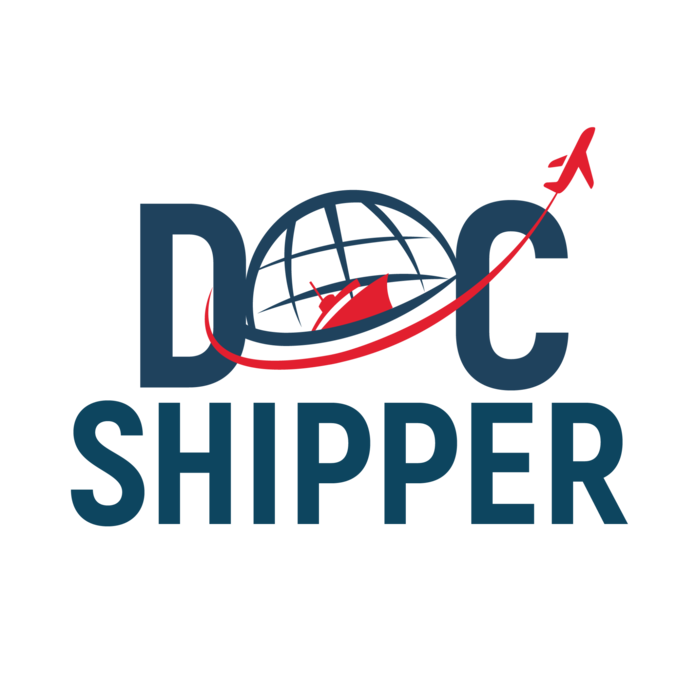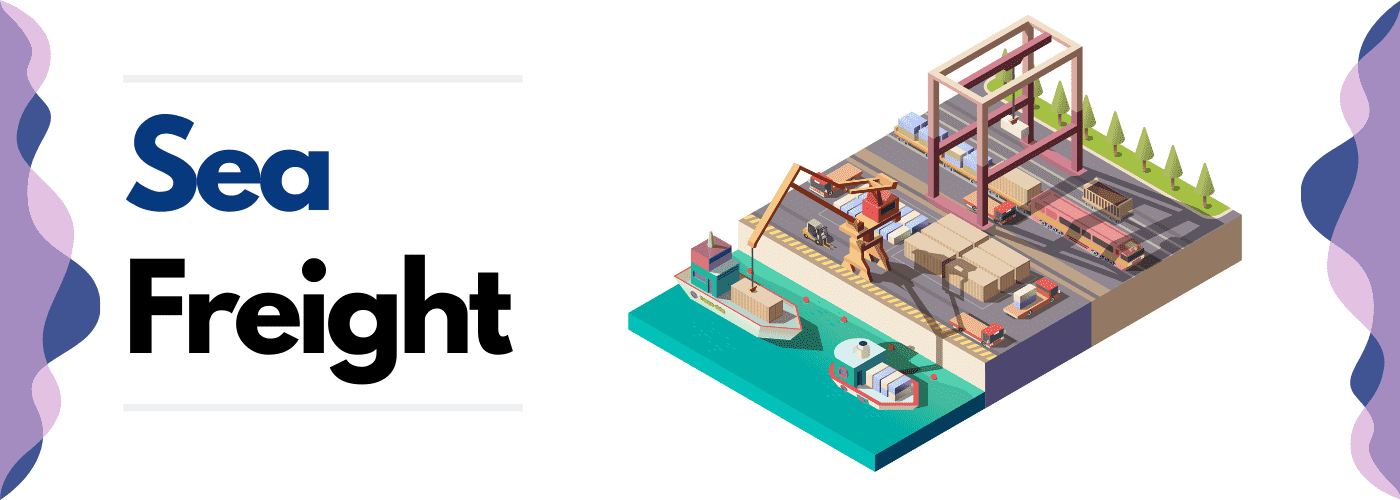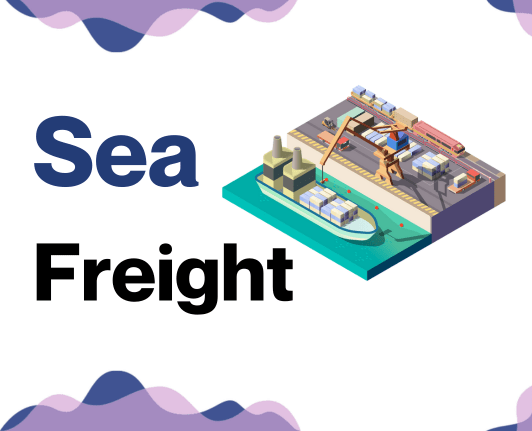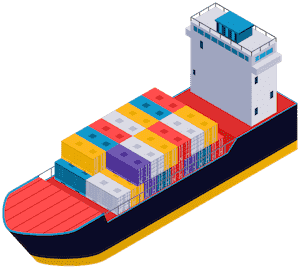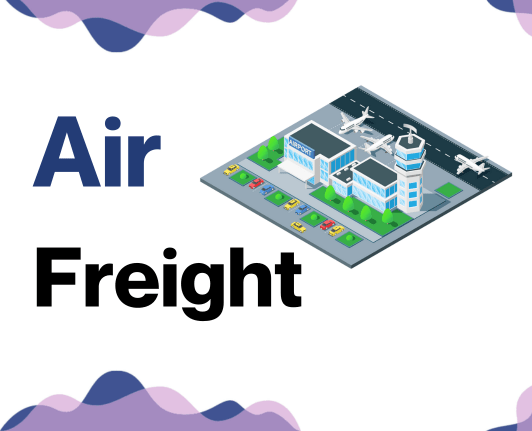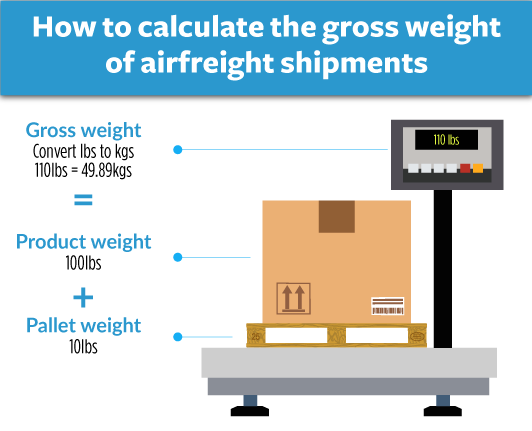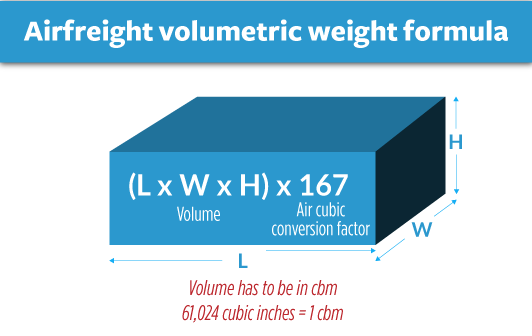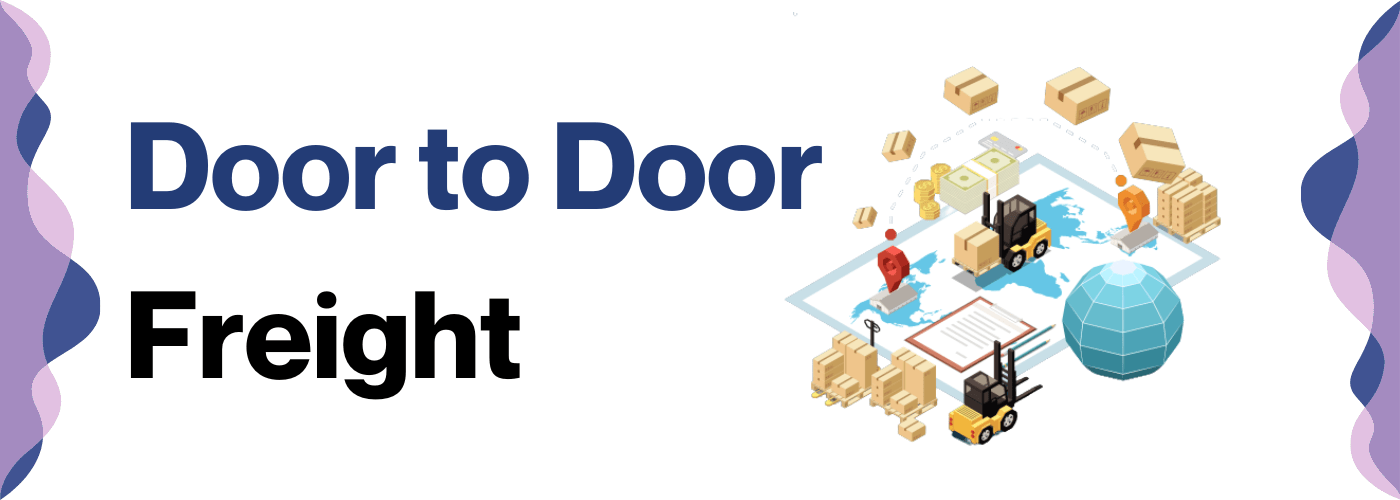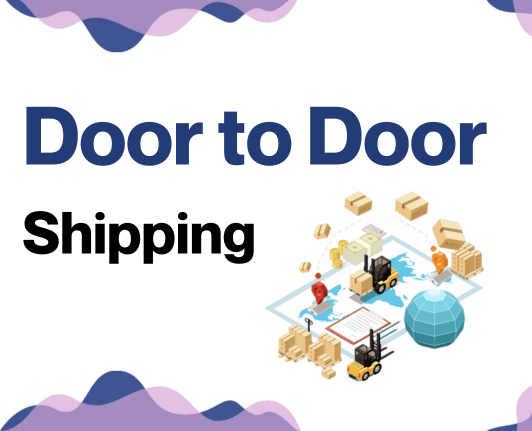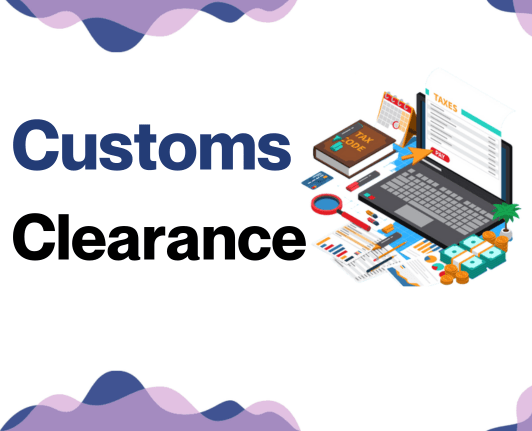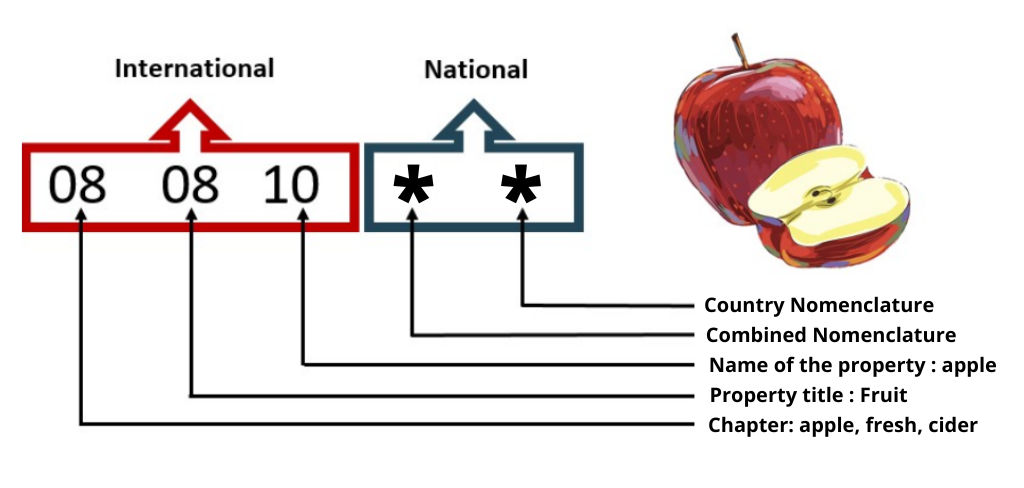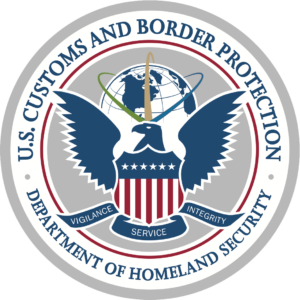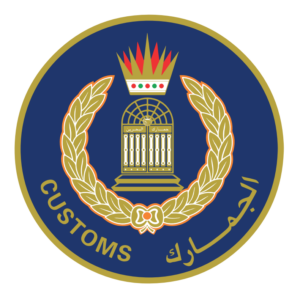Ever tried to understand freight shipping rates while juggling flaming torches? About as easy, right? Getting your goods from the US to Bahrain, or vice versa, indeed presents its own set of challenges - from making sense of the rates and tracking those elusive transit times, to deciphering the language of customs regulations. This guide is designed to shed light on these murky mysteries. We'll dive into the nitty-gritty details of freight options, unravel the red tape of customs clearance, and provide a crash course in understanding duties and taxes. Moreover, we'll offer expert advice specifically catered for businesses, making international trading less daunting. If the process still feels overwhelming, let DocShipper handle it for you! We turn the intricacies of international freight forwarding into a strategic success for your business.
Table of Contents
ToggleWhich are the different modes of transportation between US and Bahrain?
Shipping goods between the US and Bahrain? The best method might hinge on the Atlantic Ocean that separates the two. Jetting across the sky, setting sail on the high seas, or a bit of both? Location perks like Bahrain's world-class port may beckon you towards ocean freight. But then, the expediency of air transport can feel like the speed of a falcon in flight. Imagine hunting for the sweetest apple in a giant store. Your choice depends not just on the apple, but how fast you need it and how much you're willing to pay. Is it ocean waves or cloud lanes? Let's explore.
How can DocShipper help?
Looking to ship goods from the US to Bahrain? DocShipper makes the process transparent and easy. From handling customs clearance to managing documentation, we've got it covered. Explore hassle-free shipping methods today. Got questions? Our consultants are ready to assist, free of charge. Click here for a free estimate in less than 24 hours.
DocShipper Tip: Sea freight might be the best solution for you if:
- You are shipping large volumes or bulky items, as sea freight offers the most space at a cost-effective rate.
- Your cargo doesn't have an urgent deadline, as sea freight typically has longer transit times compared to air or rail.
- Your shipping routes are between major ports, allowing you to leverage the extensive global network of sea shipping lanes.
Sea freight between US and Bahrain
Ocean trade between the US and Bahrain is akin to pumping the lifeblood of commerce through the veins of business, connecting pivotal industrial centers through bustling ports like Baltimore, Los Angeles, Manama, and Hidd. Sea freight, although the tortoise in the race of transport options, wins the cost-effectiveness crown, especially when dealing with high-volume goods.
But don't get swept away by the tides; many businesses find the voyage between these two nations riddled with challenges. Handling tonnes of goods isn't child's play - it's akin to mastering a grand chessboard with customs rules as intricate as the knight's move! Mistakes? They're more common than seagulls at the harbor. But fear not, sea captains of commerce! We've got the map to navigate these treacherous waters. Stick with us, and we’ll divulge best practices and specifications to anchor your shipping on firm ground.
Main shipping ports in US
Port of Los Angeles:
Located in Southern California, this is one of the busiest ports in the United States, handling approximately 9.2 million TEU in 2020. It's known for its extensive logistic and warehousing facilities, making it a crucial gateway for trade with Asia.
Key Trading Partners and Strategic Importance: China, Japan, and South Korea are the top trading partners generating a significant portion of traffic. With its state-of-the-art facilities, this port often handles high-value cargo and trade goods, contributing significantly to the US economy.
Context for Businesses: If your business handles a large volume of import/export with the Asian market, especially high-value cargo, leveraging the Port of Los Angeles can become an integral part of your supply chain network.
Port of Long Beach:
Positioned adjacent to the Port of Los Angeles, the Port of Long Beach handled nearly 8.1 million TEU in the same period.
Key Trading Partners and Strategic Importance: As one of the world's greenest ports, it has major trade relations with China, South Korea, and Japan, dealing primarily with goods such as furniture, auto parts, clothes, etc.
Context for Businesses: If environmentally conscious shipping forms a part of your company's agenda, the Port of Long Beach, given its advanced technology and efficiency in decreasing environmental impact, presents an ideal choice.
Port of New York and New Jersey:
As the primary port of entrance on the East Coast, this port managed over 7.5 million TEU in 2020.
Key Trading Partners and Strategic Importance: Its key partners encompass several countries, including China, India, and Germany, thus making it crucial for transatlantic and global trade.
Context for Businesses: If you're planning to expand your European or Indian subcontinent outreach and desire a high-capacity port on the East Coast, this port should feature in your logistics plan.
Port of Savannah:
Located in Georgia, this port processed over 4.6 million TEU in 2020, making it one of the fastest-growing ports in the United States.
Key Trading Partners and Strategic Importance: Its chief trading allies are China, Germany, and India. The port is known for handling mainly retail consumer goods and manufacturing components.
Context for Businesses: For businesses seeking expansive facilities and potential for growth in their trade with the aforementioned countries, the Port of Savannah can meet your needs.
Port of Seattle:
In the Pacific Northwest, this port handled 3.7 million TEU in 2020.
Key Trading Partners and Strategic Importance: It primarily trades with China, Japan, South Korea dealing with products from aircrafts to agricultural produce.
Context for Businesses: If your business is based closer to the Northwest and deals with Asia-Pacific trade, this port ensures effective supply chain development.
Port of Houston:
This Texan port is a cornerstone for US inland navigation, handling around 3 million TEU in 2020.
Key Trading Partners and Strategic Importance: The primary trading partners include China, Mexico, and Brazil. This port serves as a vital connection for industrial and automotive commodities.
Context for Businesses: If your business is closer to Southern US or operates in the heavy machinery or automotive sectors, the Port of Houston could optimize your logistics.
Main shipping ports in Bahrain
Khalifa Bin Salman Port:
As an island nation, Bahrain has only one major international port, the Khalifa Bin Salman Port. While there are other smaller ports and marinas in Bahrain, none of them handles international freight traffic to the same level or has comparable facilities.
Location and Volume: Located on the Northeast of the Kingdom, this port is a pivotal hub for shipping in the Arabian Gulf region. It handles a volume close to 1.5 million TEUs per year.
Key Trading Partners and Strategic Importance: The Khalifa Bin Salman Porthttp://www.apmterminals.com/en/bahrain is a significant transit point for goods moving to and from Saudi Arabia, UAE, and Qatar. Its strategic importance lies in its advanced facilities, which include massive container storage and a vast intermodal yard.
Context for Businesses: If you're thinking of expanding your trade in the Arab Gulf region, the Khalifa Bin Salman Port can be a crucial component of your supply chain, thanks to its excellent connectivity and modern facilities. Its proximity to Saudi Arabia, one of the biggest economies in the Middle East, further enhances its strategic advantage.
Should I choose FCL or LCL when shipping between US and Bahrain?
Deciding between consolidation or a full container for your sea voyage from the US to Bahrain can seem like unravelling a large sailor's knot. But don't fret. This choice actually dictates the cost-effectiveness, delivery speed, and overall triumph of your shipment. Remember, one glove doesn't fit all hands. Let's uncover the world of Full Container Load (FCL) and Less-than-Container Load (LCL), and figure out which container option will sail your goods smoothly to their destination. Join us ahead as we dive into both and help you steer your decision-making ship in the right direction.
LCL: Less than Container Load
Definition: LCL (Less than Container Load) shipping, also known as consolidation, is a smart way to ship smaller cargo volumes. It enables multiple consignors to share a single container.
When to Use:
Choosing LCL is strategic when your cargo volume is less than 15 CBM (cubic meters), providing cost efficiency and flexibility for low-volume shipments.
Example:
Consider an exporter selling handmade crafts from LA to Bahrain. Their consignment may only occupy 10 CBM. LCL shipment enables them to share container space with other businesses, efficiently optimizing their costs.
Cost Implications:
While an LCL freight quote might initially seem higher than the equivalent volume in a full container load (FCL), remember that you aren't bearing the cost of the entire container. Plus, you also avoid costs related to unused space if your cargo volume doesn't fill an FCL. In essence, the cost-effectiveness of LCL shipping is amplified for low-volume shippers.
FCL: Full Container Load
Definition: Full Container Load (FCL) shipping is a term in international freight where a shipper owns exclusive rights to a single container, which is not shared with others.
When to Use: If you're shipping a high-volume cargo, like over 13/14/15 cubic meters (CBM), FCL may be your best option for shipping from US to Bahrain. This is because, with FCL shipping, the container will be sealed from origin to the destination, safeguarding your cargo from damages and providing better safety.
Example: Suppose you're a furniture retailer shipping a collection of indoor and outdoor furniture totaling 18 CBM. Opting for FCL allows you to fit everything into either a 20'ft or a 40'ft container, ensuring that all your cargos are in one place. Your goods are less likely to get damaged as there won't be any moving or handling at the transshipment points.
Cost Implications: Although FCL shipping quotes can be higher than their LCL counterparts, the cost per unit is usually cheaper for larger volumes, making it a more economical choice when transporting more considerable consignments. Furthermore, since an FCL container is exclusively yours, you save on unpacking fees at your destination port, which makes it a cost-effective decision in the long run.
Unlock hassle-free shipping
Understand the complexity of choosing between consolidation and a full container load? DocShipper is here to simplify those ocean freight challenges! Our team of industry veterans considers critical factors such as cost, shipment size, and deadlines to provide personalized shipping solutions. As every business has unique requirements, we don't believe in one-size-fits-all approaches. Let's make your maritime shipping experience seamless between the US and Bahrain. Ready for a hassle-free shipping journey? Reach out for a free cost estimation today!
How long does sea freight take between US and Bahrain?
Shipping from the US to Bahrain via sea freight typically takes an average time of anywhere between 15 to 37 days, depending on several factors. Transit times account for variables such as the specific ports used, weight of the cargo and the nature of the goods. Owing to these variances, we recommend contacting a freight forwarder like DocShipper for a personalized, detailed quote specific to your shipping needs.
| Port of Departure (US) | Port of Arrival (Bahrain) | Average Transit Time (days) |
| Port of Los Angeles | Khalifa bin Salman Port | 36 |
| Port of Houston | Khalifa bin Salman Port | 29 |
| Port of Savannah | Khalifa bin Salman Port | 26 |
| Port of Charleston | Khalifa bin Salman Port | 25 |
*Note: The average transit times represented in the table will vary based on shipping conditions and other logistics factors.
How much does it cost to ship a container between US and Bahrain?
Estimating the cost to ship a container between the US and Bahrain can be quite a puzzle! Ocean freight rates per CBM can range considerably, with numerous factors in play such as the points of loading and destination, carrier choice, nature of goods, and fluctuating market conditions. That makes pinning down an exact shipping cost tricky. But worry not! Our skilled shipping specialists are here to untangle this complex web for you. They will tailor the best rates for your specific needs, ensuring you get a fair quote aligned with your specific context and market dynamics. With every case treated individually, we've got your back in the world of international shipping.
Special transportation services
Out of Gauge (OOG) Container
Definition: An OOG container, or Out of gauge cargo, is designed for items that can't comfortably fit within the dimensions of standard shipping containers due to their size or shape.
Suitable for: It's mainly used for large machinery, industrial equipment, large pipes, windmill components, and other oversized items.
Examples: Construction equipment like cranes or excavators, boat propellers, or even aerospace parts.
Why it might be the best choice for you: If your cargo is too long, tall, or wide for a standard container, an OOG container could handle your shipping needs efficiently without disassembling your goods.
Break Bulk
Definition: Break bulk refers to the method of shipping goods individually, banded or palletized, instead of in containers. It is done for goods that cannot fit or justify the utilization of an entire container.
Suitable for: Goods that are oversized, very heavy, or of irregular shape.
Examples: Boats, turbines, generators, timber, or steel beams.
Why it might be the best choice for you: If you're shipping goods that are too massive or oddly-shaped for containers, break bulk can offer you flexibility in handling and stacking your goods.
Dry Bulk
Definition: Dry bulk involves the shipping of loose cargo load, such as grains, coal, or ore, in large quantities directly inside the vessel's hull.
Suitable for: Commodities which are non-liquid and unpackaged.
Examples: Coal, iron ore, grains, bauxite, or sand.
Why it might be the best choice for you: If your business deals in large volumes of unpackaged or un-containerized commodities, then dry bulk shipping might be your most efficient and economic way forward.
Roll-on/Roll-off (Ro-Ro)
Definition: Roll-on/Roll-off, or Ro-ro vessels, are specifically designed to carry wheeled cargo such as cars, trucks, semi-trailer trucks, trailers, or railcars that are driven on and off the ship on their own wheels or using a platform vehicle.
Suitable for: Vehicles, heavy machinery, and other wheeled cargo.
Examples: Cars, buses, trucks, mining equipment, tractors, or locomotives.
Why it might be the best choice for you: If your business involves transporting motorized vehicles or heavy machinery that can be driven, Ro-ro is a highly efficient method saving you time and money.
Reefer Containers
Definition: Reefer containers are refrigerated containers used to transport temperature-controlled cargo such as foodstuff, pharmaceuticals, or chemicals.
Suitable for: Perishable goods requiring a specific temperature range during transport.
Examples: Fruits, vegetables, meat, dairy products, or medicinal supplies.
Why it might be the best choice for you: If you deal in perishable goods or products that need to be kept at a certain temperature throughout the journey, reefer containers can ensure your goods arrive in optimum condition.
At DocShipper, we understand how important your cargo is. That's why we offer a range of sea freight shipping options to suit your specific needs. If you're considering shipping from the US to Bahrain, feel free to contact us for a free shipping quote within less than 24h.
DocShipper Tip: Air freight might be the best solution for you if:
- You are in a hurry or have a strict deadline requirement, as air freight offers the fastest transit times.
- Your cargo is less than 2 CBM (Cubic Meter), making it more suitable for smaller shipments.
- Your shipment needs to reach a destination that is not easily accessible by sea or rail, allowing you to tap into the extensive network of global airports.
Air freight between US and Bahrain
When you think of whisking high-value parcels, such as electronics, pharmaceutical products, or essential documents, from the US to Bahrain instantly, air freight instantly pops up in mind. Why? Because it's like a sprinter; quick and reliable. Smaller the cargo, swifter the run- that's air freight for you. It's just like sending an urgent email instead of posting a traditional letter.
But here's where many stumble. While shipping through the blue skies might be fast and secure, it's not free from fine lines and complex calculations. Many businesses are 'caught in the wind' with excessive costs because they didn't correctly factor in their shipment's weight or overlooked best practices in air freight. Just like underestimating the effort in running a marathon can lead to a burnout, wrong estimations in air freight can cost a fortune. Let's unpack this further onwards and help you stay in the clear.
Air Cargo vs Express Air Freight: How should I ship?
Shipping between the US and Bahrain and can't decide which air option suits you best? Picture air cargo as a shared taxi ride in a regular airline, while express air freight is like having an UberPOOL all to yourself in a dedicated plane. So whether you're after efficient use of space or super speedy delivery, read on to discover the perfect solution for your business' unique needs.
Should I choose Air Cargo between US and Bahrain?
Opting for air cargo across the US and Bahrain could align well with your budgetary needs. Renowned airlines such as American Airlines link and Gulf Air link offer cost-effective solutions. While air cargo may promise reliability, be prepared for longer transit times due to the airlines' fixed schedules. Interesting to note, the attractiveness of air freight jumps considerably when dealing with cargo weighing over 100-150 kg (220-330 lbs), making it a strong consideration for your shipping strategy.
Should I choose Express Air Freight between US and Bahrain?
Express air freight relies on dedicated cargo planes, no passengers included, providing specialized fast and reliable services. It's ideal if you're shipping under 1 CBM or between 100/150 kg (220/330 lbs) of cargo. Think efficiency and speed - perfect for small but crucial shipments. Renowned international express courier firms, FedEx, UPS, or DHL, do an excellent job with this. If swift delivery and shipment safety matter most to you, express air freight is the superior choice for your US to Bahrain shipments.
Main international airports in US
Los Angeles International Airport
Cargo Volume: Handles over 2 million metric tons of cargo per year.
Key Trading Partners: Key destinations include China, Japan, South Korea, and Australia, with Europe being a significant partner too.
Strategic Importance: Los Angeles International Airport is the fifth busiest airport in the world and boasts a prime location on the U.S. West Coast, acting as a vital pivot point for trans-Pacific freight.
Notable Features: The airport boasts specialized cargo facilities including cold storage for perishable goods.
For Your Business: If your company is involved in trade across the Pacific or require special cargo handling, Los Angeles International Airport could be a strategic hub for your shipping needs.
Chicago O’Hare International Airport
Cargo Volume: With a cargo traffic of almost 2 million metric tons per year, Chicago O'Hare is among America's busiest cargo airports.
Key Trading Partners: Main trading partners include Europe, China, Canada, and Mexico.
Strategic Importance: Located in America's heartland, Chicago O'Hare acts as a crucial connection point between national and international trade.
Notable Features: The airport hosts a dedicated Cargo Area with 24/7 operations and expedited customs processing facilities.
For Your Business: If your business involves national distribution or timely trans-continental trade, using Chicago O'Hare International Airport might optimize your shipping operations.
Miami International Airport
Cargo Volume: Handles over 2.3 million tons of cargo annually.
Key Trading Partners: A notable cargo hub for Latin America and the Caribbean Islands.
Strategic Importance: Miami International Airport serves as the primary U.S. gateway for perishable goods due to its significant support for cold-chain handling and logistics.
Notable Features: Miami International hosts the largest U.S. Customs District for value-of-goods cleared and offers a wide range of logistics services.
For Your Business: If your business relies heavily on the transport of perishable goods or trade with Latin American countries, Miami International could be your ideal shipping strategy.
Ted Stevens Anchorage International Airport
Cargo Volume: Handles approximately 2.8 million metric tons of cargo each year.
Key Trading Partners: Key trade routes to China, Japan, South Korea, and other locations in the Asia-Pacific region.
Strategic Importance: Due to its geographic location, it serves as a critical refueling stop for cargo flights between North America and Asia.
Notable Features: The airport offers round-the-clock operations, quick cargo transfer times and is designated as a strategic critical infrastructure.
For Your Business: If your company's trade routes primarily cross the Pacific, using Anchorage Airport for stopovers or transshipment might boost your shipping efficiency.
John F. Kennedy International Airport
Cargo Volume: Moves around 1.3 million metric tonnes of cargo annually.
Key Trading Partners: Major trading partners include China, Europe, South Korea, and Brazil.
Strategic Importance: As one of the busiest airports in the U.S., it is strategically located to facilitate international shipping operations, particularly trans-Atlantic trade.
Notable Features: Offers a range of cargo handling services and has specialized facilities at the JFK Air Cargo Center.
For Your Business: For businesses dealing primarily with trans-Atlantic trade or requiring comprehensive cargo handling solutions, JFK International could serve as an essential component of your logistics plan.
Main international airports in Bahrain
Bahrain International Airport
Cargo Volume: Roughly 450,000 metric tons of cargo are handled annually, making it a significant hub for international shipping.
Key Trading Partners: The leading trading partners include Saudi Arabia, the United Arab Emirates, the United States, China, and Germany.
Strategic Importance: Its strategic location in the Persian Gulf makes it a prime transit hub for the Middle East, Europe, and Asia, and its facilities can accommodate all types of cargo, including dangerous goods and live animals.
Notable Features: The airport has a dedicated cargo terminal offering a range of services, from cargo handling to warehousing. It operates 24/7, simplifying timely shipping logistics. Recently, a Bahrain Logistics Zone was established adjacent to the airport to offer free zone and domestic businesses swift access to the airport's cargo facilities.
For Your Business: If your business involves trading with the Middle East, Europe, or Asia, Bahrain International Airport could provide a vital link to your supply chain. Its impressive cargo handling capacity and convenient trading hours make it a reliable, timely, and efficient choice for international shipping.
How long does air freight take between US and Bahrain?
On average, air freight from the US to Bahrain takes about 4-6 days. However, this estimated timeframe can fluctuate depending on various factors. The specific airports you're shipping from and to, the weight of your goods, and their nature all contribute to these changes in transit time. For precise, tailored timelines based on your unique shipping needs, it's best to consult an expert freight forwarder like DocShipper.
How much does it cost to ship a parcel between US and Bahrain with air freight?
The cost of air freight from the US to Bahrain can vary widely, averaging between $3 - $6 per kg. Accurate quotes are determined by numerous factors such as the distance from the departure and arrival airports, package dimensions, weight, and the nature of goods. Given these potential variations, we tailor each quote to your specific shipping needs to provide the best possible rate. Rest assured, our team is committed to delivering cost-effective solutions with every freight quote. So, why wait? Reach out to us and receive a free quote in less than 24 hours!
What is the difference between volumetric and gross weight?
Understanding gross and volumetric weight is crucial to a business planning a shipment. Gross weight is the actual weight of your goods, including packaging and bracing materials, measured in kilograms (kg). Volumetric weight, on the other hand, considers the space a package occupies rather than its actual weight.
Let's look at how these weights are calculated in Air cargo and Express Air Freight services. For Air cargo, volumetric weight is calculated by multiplying the length, width, and height of a package in centimeters (cm), and dividing by 6,000. Most couriers calculate volumetric weight for Express Air Freight services by dividing the cubic size of a package in cm by 5,000. In contrast, gross weight is straightforward – it’s the weight of the package when placed on a scale.
Consider a hypothetical package measuring 100cm x 50cm x 50cm and weighs 40kg. In Air cargo, its volumetric weight would be (1005050)/6000, equating to 416.67kg. Converting this to pounds, it's approximately 919 lbs. In Express Air Freight, it would be (1005050)/5000, roughly 500kg or 1102 lbs. Although the same package’s gross weight is 40kg (about 88 lbs), the shipment’s chargeable weight for airlines would be based on the volumetric weight as it's the heavier value.
Explaining why these calculations matter is simple: understanding them can help you estimate freight charges better because airlines will bill you based on whichever weight (volumetric or gross) is higher. It’s the difference between an expected cost and a rather unfortunate surprise on your invoice.
DocShipper tip: Door to Door might be the best solution for you if:
- You value convenience and want a seamless shipping process, as door-to-door takes care of every step from pickup to delivery.
- You prefer a single point of contact, as door-to-door services typically provide a dedicated agent to handle all aspects of the shipment.
- You want to minimize the handling of your goods, reducing the risk of damage or loss, as door-to-door minimizes transitions between different modes of transport.
Door to door between US and Bahrain
Navigating the shipping world? Consider Door to Door service between the US and Bahrain. It’s a comprehensive solution where your shipment is picked up, transported across borders, and delivered right to your doorstep, hassle-free. Ideal for its convenience and simplicity, it's a perfect choice for businesses prioritizing ease in their logistics. Now, got your captain's hat on? Let's set sail and dive deep into the specifics!
Overview – Door to Door
Shipping goods between the US and Bahrain? Save yourself the stress with our door-to-door service. This no-hassle solution handles transportation, customs clearance, and delivery of your goods, right to your designated location. While it may cost more than other methods, the convenience is unmatched. Challenges like arduous paperwork, finding reliable carriers, and being blindsided by unexpected costs become a thing of the past. Time and time again, businesses like yours choose DocShipper's door-to-door service, valuing it as a stress-reliever in the intricate world of logistics. Let us handle the complexity, so you don't have to.
Why should I use a Door to Door service between US and Bahrain?
Ever tried juggling flaming swords while riding a unicycle? No? Well, cross-border shipping can sometimes feel that way. So, here are five powerful reasons why you should consider Door to Door service for your US-Bahrain shipments.
1. Destress your logistics: Door to Door service is like having a dedicated logistics superhero in your team. You can confidently sit back and relax knowing everything, from pick up to final delivery, is managed by experienced professionals.
2. Timing is everything: For urgent shipments, time isn't just money - It's business. Door to Door service cuts through the guesswork, providing a streamlined process that ensures your goods arrive right on schedule.
3. Specialized care for complex cargo: If your freight includes complex cargo, this service will become your new best friend. It's like putting your precious goods in well-trained hands that understand and respect their value, addressing their special needs for every step of the journey.
4. Full trucking services: No more sleepless nights worrying about the trucking part of your shipments. This service simplifies your processes by arranging trucking from and to the requested places, giving you just one less thing to worry about.
5. Ultimate convenience: Last but by no means least, convenience is its middle name. Picture this - all customs procedures, duties, and tricky paperwork, taken care of, without you having to lift a finger.
There you have it. Door to Door services are designed to make your shipping process hotter than a Bahraini summer but without the sweat. It's shipping, simplified!
DocShipper – Door to Door specialist between US and Bahrain
Simplify your transactions with DocShipper's end-to-end shipping between the US and Bahrain. Our professional expertise allows us to manage all facets of the journey - from packing and transport to handling customs across all shipping methods. This process leaves you free from stress as we're skilled, proficient, and ready to lend a hand. We assign a dedicated Account Executive to cater to your needs. Reach out for a free estimate which we deliver swiftly within 24 hours, or engage our consultants at no cost for further inquiries. Trust us for seamless, hassle-free shipping solutions.
Customs clearance in Bahrain for goods imported from US
Customs clearance, an essential stage in international shipping, can often prove intricate, particularly when importing goods from the US to Bahrain. The process is riddled with potential obstacles such as unexpected costs due to customs duties, taxes, and quotas, not to mention the licensing requirements. A lack of understanding can lead to your goods getting stuck in customs, creating unnecessary delays and costs. Thus, mastering the process is crucial – a topic we will delve deeper into in the sections to come. Rest assured, DocShipper is ready to guide you through this complex procedure for any type of goods worldwide. To get started, contact our team with your goods' origin, value, and the HS Code – these three mandatory elements will help us provide you with a more accurate estimation.
How to calculate duties & taxes when importing from US to Bahrain?
Decoding the calculation of customs duties can seem like unscrambling a complex code. But fear not: with the right information in your arsenal, it becomes a straightforward task. Your key tools in this process will be the HS Code, the origin country of the goods, the customs value, and the applicable tariff rate. Moreover, be sure to account for any other taxes and fees that might apply to your products.
Just remember, taking the first step is often the most pivotal. Start your journey towards a smooth shipping experience by identifying the country where your goods were manufactured or produced. It sets the stage for determining the HS Code, a subsequent stepping stone in decoding your duties and taxes. Together, these pieces of the puzzle will facilitate a seamless import process from the US to Bahrain.
Step 1 - Identify the Country of Origin
Recognizing your goods' country of origin - in our case, the US - is more than just a checkbox on a form. It guides your journey through customs and is crucial for five main reasons:
1. Trade deals: The US-Bahrain Free Trade Agreement allows certain American goods to enter Bahrain duty-free. Knowing your country of origin can help you leverage these duty savings.
2. Import restrictions: Certain types of goods are banned from import into Bahrain from certain countries. Verify your goods don't face these limitations.
3. Calculation of charges: Customs uses the country of origin to determine your goods' Customs Value, which impacts how much you’ll pay in duties.
4. Goods compliance: Bahrain has differing product standards and requirements depending on the good's origin. Avoid re-exportation costs or product disposal by ensuring your goods comply.
5. Documentation: Customs paperwork - like Certificates of Origin - often demand this knowledge. Ensure your document accuracy to prevent unnecessary delays.
So, identify your product's origin first. It's not only elementary but pivotal. Trade effectively, understand your dues, prevent hindrances, and open the door to successful US-Bahrain shipping.
Step 2 - Find the HS Code of your product
The Harmonized System (HS) Code is a standardized numerical method of classifying traded products. It's used by customs authorities around the world to identify products for the purpose of levying duties and taxes, amongst other things. An accurate HS code ensures that you're paying the correct amount on your goods, giving both you and customs a hassle-free experience.
Often, the easiest way to find the HS code for your product is by asking the product's supplier. They're well-versed in the products they deal with and familiar with the relevant import/export regulations.
However, if asking the supplier isn't an option, you can find an HS code yourself. There's a straightforward process to follow using the Harmonized Tariff Schedule. To begin, simply use the search bar on the platform to look up your product. You'll find the HS code in the Heading/Subheading column of the search results.
Please remember that accuracy in choosing the right HS Code is of utmost importance. An incorrect code can lead to undesired delays and obligations such as fines. Though understandable, mistakes in this can cause serious repercussions for your shipments.
Step 3 - Calculate the Customs Value
Understanding 'Customs Value' can seem tricky, yet it's crucial to anticipate your shipment costs accurately. It's not just the price tag on your products. Picture it as the total 'landing cost' of your goods reaching Bahrain from the US. This includes the cost of the goods you're shipping, the international shipping cost, and the cost of insurance.
Let's take an example. If you're exporting a batch of designer bags worth $100000, paid $2000 for shipping, and your insurance cost $500, then your customs value would be $102500. This total value is what the Bahraini customs use for calculation, not merely the value of your goods. It can significantly affect your overall logistics budget, so it's vital you estimate this cost accurately.
Step 4 - Figure out the applicable Import Tariff
An import tariff is a tax imposed by a government on goods imported from another country. For goods imported from the US to Bahrain, there are multiple tariffs to consider.
Here's how to determine your import tariff:
1. Start with identifying the Harmonized System (HS) code for your product. This is a standardized numerical method of classifying traded products. For example, let's say you're importing baby car seat, which has an HS code of 9401.20.
2. Next, visit a trusted online tariff database specific to Bahrain. Typically, these databases will have search features where you can input your HS code, and the country of origin (in this case, the US).
3. The database will provide the required tariff percentage. For example, the import tariff for a baby car seat from the US to Bahrain might be 5%.
4. Now, calculate the import duties. For this, you need to know the Cost, Insurance, and Freight (CIF) value of your goods. Suppose the CIF is USD 1000, your import duties would be 5% of USD 1000, which equates to USD 50.
Always verify the tariff rates from the official authorities or your freight forwarder. The steps above are subject to change depending on new trade agreements or regulations.
Step 5 - Consider other Import Duties and Taxes
When importing goods from the US to Bahrain, it's crucial to be aware that besides the standard tariff rate, there could be other import duties based on the product's nature and country of origin.
Firstly, the excise duty is a form of tax levied on particular goods like alcohol or tobacco. For instance (remember, this is just an example and rates can vary), importing a wine bottle may attract an excise duty of 10% of the product's declared value.
Secondly, anti-dumping taxes come into the picture when a product is exported to Bahrain at a lower price than it's sold in the home market - say if an American agricultural tractor is sold much cheaper in Bahrain than in the US.
Lastly, and most importantly, don't forget VAT, which is charged on the importation of goods. For instance, if the current VAT rate is 5%, you'll apply it to the cumulated amount of the product value and the import duties.
Therefore, the total import duties and taxes would be calculated as follows:
Total = Product Value (in USD) + Standard Tariff + Additional Duties (like Excise if applicable) + VAT (5% of the cumulative amount)
The bottom line is to stay alert and well-prepared for these potential extra costs, ensuring a smoother importing process.
Step 6 - Calculate the Customs Duties
Step 6 of the customs clearance process in Bahrain when importing goods from the US involves the calculation of customs duties. The formula to calculate this is simple: customs value of the goods (which includes freight and insurance) customs duty rate.
For example, if you're importing machinery valued at $10,000 and the customs duty rate is 5%, your customs duty will be $500. Now, if Value Added Tax (VAT) is also applicable, let's assume a rate of 20%, the customs value plus customs duty ($10,500) is multiplied by the VAT rate to get $2,100 in VAT.
Lastly, in a scenario involving customs duties, VAT, anti-dumping taxes, and Excise Duty, let's consider home appliances valued at $15,000, with a duty rate of 5% and 20% VAT. We add an anti-dumping tax of 15% and Excise Duty of 10%. The calculation becomes a bit complex but don't worry, first, calculate the customs duties ($750), then add it to the customs value. On this sum, calculate the anti-dumping tax ($2,362.5) and the Excise Duty ($1,575) and then add them all up. Consequently, the VAT ($3,737.5) is calculated on this cumulative amount.
Customs clearance can be complex, but that's why DocShipper offers to handle it for you, anywhere in the world. Trust us to ensure you're never overcharged. Contact us for a free quote in under 24 hours.
Does DocShipper charge customs fees?
At DocShipper, we deal with the customs clearance process for you, from the US to Bahrain. While we charge for providing these services, we don’t levy any customs duties – these are a separate cost, dictated by the government. We'll give you all necessary documentation from the customs office as proof, ensuring you're only paying what the authorities demand. This transparent process seeks to ease your experience getting goods from point A to B. The difference between customs clearance costs and duties can be as varied as shipping methods, but clarity and efficiency are our top priorities.
Contact Details for Customs Authorities
US Customs
Official name: U.S. Customs and Border Protection (CBP)
Official website: https://www.cbp.gov/
Bahrain Customs
Official name: Bahrain Customs Affairs
Official website: http://www.bahraincustoms.gov.bh/
Required documents for customs clearance
Facing perplexity about customs paperwork? Grasp the importance of key documents–the Bill of Lading, Packing List, Certificate of Origin, and Documents of Conformity–in our rapid rundown designed to simplify your clearance concerns and remove the mystery from the shipping process. Stay tuned.
Bill of Lading
When you're shipping goods from the US to Bahrain, one document you can't overlook is the Bill of Lading. It serves as a legit contract between you and the carrier, outlining the specifics of your shipment and signaling the change in ownership. Today's world also offers an electronic ('telex') release which speeds up the process, saving you time that you can invest elsewhere in your business. For air cargo, you'll require an Airway Bill (AWB), which works similarly. Ensuring you have these documents ready and correctly filled can steer clear of unnecessary hold-ups at customs and keep your shipping timeline on track. Remember, an accurate Bill of Lading acts as your safeguard and sets the course for a smooth and efficient cargo transit.
Packing List
Creating an accurate Packing List for your US-to-Bahrain shipment isn't just extra paperwork – it's an essential document! Whether by sea or air, customs authorities, like the Bahrain Customs Affairs, scrutinize your list to understand what's stowed in your cargo. Picture a shipment of machine parts – your list details every nut, bolt, and gear you're sending, adding transparency in the customs-busting process. Misreport and your shipment could face delays or worse, fines. Why risk it? Embrace the virtue of precision; let every item have its eligible place on your Packing List. Remember, accuracy in documentation from the outset smooths your shipping journey.
Commercial Invoice
Navigating the choppy waters of customs clearance between the US and Bahrain? A precisely crafted Commercial Invoice is your compass here. This invoice should detail your shipped goods, from product description and HS code to the total value and terms of delivery. Nail it down and you'll sail swiftly through customs. Misaligned documents, though? Rough seas ahead! So, imagine you're shipping specialty alloys from Ohio to Manama. On your Commercial Invoice, you'd describe the alloys, add their HS code (e.g., 720299), list the shipment’s total value, and specify DDP (Delivered Duty Paid) as your term of delivery. Remember, a well-aligned Commercial Invoice not only facilitates smooth customs clearance but also keeps you in safe waters by avoiding unexpected fees or delays. Happy sailing!
Certificate of Origin
Embarking on a shipping journey from the US to Bahrain? Don't forget your Certificate of Origin (CoO). This vital document verifies your goods' country of manufacture and it's not just a piece of paper - it could unlock preferential customs duty rates for your shipment. For instance, imagine you're shipping machinery made in the US. With a CoO at hand, you could enjoy a smooth customs clearance process and possibly lower duty rates under the US-Bahrain Free Trade Agreement. The trick is to clearly specify 'Made in the USA' or the designated country on the certificate. It's a seemingly small detail that plays a big part in your shipping success.
Get Started with DocShipper
Unsure about customs clearance between the US and Bahrain? Let DocShipper step in. Our seasoned experts can streamline the process for you, minimizing delays while ensuring legal compliance. Trading internationally doesn't have to give you headaches. Reach out to us for a free quote within the next 24 hours and unburden your shipping concerns. Trust us to bridge your business across borders efficiently!
Prohibited and Restricted items when importing into Bahrain
Confused about what you can or can't import into Bahrain? Delve into the nuances of Bahrain's import restrictions, gracefully avoid possible mishaps, and keep your shipments sailing smoothly. Let's eliminate those headache-inducing customs bottlenecks together!
Restricted Products
- Alcoholic Beverages: You'll need to get a special permit from the Ministry of Industry, Commerce and Tourism of Bahrain. Find more details and apply for your permit on the Ministry's official website.
- Prescription Drugs: For these items, the requirement is to obtain a special permit from the National Health Regulatory Authority of Bahrain. Gather more details and start your process at their official website.
- Pets: Your fur friends need a permit too. Get yours from the Veterinary Quarantine Department, Ministry of Municipality Affairs and Urban Planning in Bahrain.
- Firearms and Ammunition: For these goods, a license from the Ministry of Interior, General Directorate of Criminal Investigation and Forensic Science in Bahrain is necessary.
- Tobacco Products: Control your tobacco import with a permit from the Ministry of Health in Bahrain.
- Dangerous Goods: Safety first! For these, a special permit from the Supreme Council for Environment in Bahrain is needed. Find more info and apply online on their website.
- Plants and Plant Products: Love greenery? For these, you should get a Phytosanitary Certificate from the Ministry of Municipality and Urban Planning's Agriculture Affairs.
- Meat and Meat Products: If these are a big part of your business, grab your permit from the Ministry of Municipality Affairs and Urban Planning's Veterinary Department.
Always remember that these regulations can change, and it's important to check back with the relevant bodies to get the most accurate information. Happy shipping!
Prohibited products
- Narcotics and psychoactive substances
- All types of gambling tools and machines
- Fireworks and explosives
- Cultured pearls
- Indian Sarees and similar items
- Fertilizers and minerals of Israeli origin or manufactured in Israel
- Terminally ill live animals
- Wild and dangerous animals
- Infringing items (counterfeit/trademark knock-offs)
- Items contradictory to Islamic faith and public morals
- Equipment intending to jam, scramble, detect, or interrupt telecom or parabolic services
- Products containing pork and its byproducts
- Ivory and ivory products
- Asbestos
- Radioactive materials
- Waste, dirt, and garbage.
Are there any trade agreements between US and Bahrain
Yes, there's a Free Trade Agreement (FTA) in place between the US and Bahrain, known as the US-Bahrain FTA. This agreement can significantly reduce or even eliminate duty costs on your exports. Equally important, there are ongoing discussions to bolster the bilateral trade relations with investment in infrastructure projects, creating new opportunities for your business. It's recommended to stay informed about these developments as they may introduce further benefits for your trade.
US - Bahrain trade and economic relationship
The economic relations between the US and Bahrain present a dynamic landscape rooted in a Free Trade Agreement initiated in 2006. U.S. goods and services trade with Bahrain totaled an estimated $4.0 billion in 2022. Exports were $1.4 billion; imports were $2.6 billion. The U.S. goods and services trade deficit with Bahrain was $1.2 billion in 2022. Heavy investments in key sectors like information technology, aluminium production, and finance have fostered mutual growth. This measured bilateral relationship extends beyond simple trade, marking growth and opportunity in both economics and collaborative potential.
Your Next Step with DocShipper
Shipping from the US to Bahrain or vice versa? Endless paperwork, complex customs clearance, and overlooked duties can turn an exciting opportunity into a logistical nightmare. But it doesn't have to be this way. As your expert freight forwarder, DocShipper takes the burden off your shoulders, ensuring a seamless, stress-free shipping process. Want to focus on what you do best and leave the headache of logistics to us? Reach out to DocShipper today. Your shipping peace of mind is just a call away.
Additional logistics services
Explore our comprehensive range of additional logistics services. From warehousing to distribution, we handle every step, ensuring your entire supply chain process is seamless and efficient. Discover how DocShipper goes beyond shipping and customs, shaping the future of your international trade.
Warehousing and storage
Finding a trustworthy warehouse in Bahrain can feel like a desert mirage. With crucial elements like temperature control for your temperature-sensitive products, it's not a decision to be taken lightly. From electronics to perishables, the right conditions make all the difference. Unearth more resources and options for your warehousing needs on our dedicated page: Warehousing.
Packaging and repackaging
Proper packaging means not just safety, but compliance when shipping from the US to Bahrain. This becomes hassle-free with a reliable agent who understands global standards and product-specific needs. Picture shipping delicate glassware - a tad bit of negligence and it's shattered. But with our expert packaging services, rest easy. More info on our dedicated page: Freight packaging.
Cargo insurance
For peace of mind during shipping, consider Cargo Insurance over fire insurance. This shields goods not just from fire, but also covers mishaps like damages, theft, or delay. Think about a truck's cargo spilling onto a highway – without insurance, that's a costly setback! Investing upfront in Cargo Insurance can save you from such unforeseen incidents. For in-depth understanding, check our dedicated page: Cargo Insurance.
Supplier Management (Sourcing)
Sourcing products in Asia or East Europe? DocShipper has you covered. We bridge language barriers, find suppliers, and manage the procurement process. Imagine buying from a Chinese manufacturer as easy as ordering take-out. We streamline the sourcing journey, eliminating guesswork. Check out our Sourcing service for in-depth information.
Personal effects shipping
Moving between the US and Bahrain? Your fragile or bulky items deserve professional handling! With us, shipping personal effects is a breeze, whether it's your grandmother's antique mirror or a prized piano. Rest assured, we prioritize care and flexibility, making your move stress-free. Explore more on our dedicated page: Shipping Personal Belongings.
Quality Control
Managing quality control is paramount for successful shipments from the US to Bahrain. It's not just about ensuring your goods stand up to customs scrutiny; it's about protecting your reputation. Picture this: a batch of your customized tech products fails due to a minor manufacturing glitch, creating unhappy Bahraini customers. With quality inspections, prevent such mishaps by catching flaws early on. More info on our dedicated page: Quality Inspection.
Product compliance services
Shipping products internationally? Compliance can be a curveball! No worries, our Product Compliance Services are here to make sure your goods meet all the regulations. We even conduct laboratory testing for certifications. So, step into new markets with confidence knowing that your products are all set. More info on our dedicated page: Product Compliance Services.
FAQ | For 1st-time importers between US and Bahrain
What is the necessary paperwork during shipping between US and Bahrain?
Shipping from the US to Bahrain requires a few essential documents. We at DocShipper will take care of the bill of lading for sea freight or air waybill for air freight for you, to ease the process. Nevertheless, it is crucial for you to provide us with the packing list and the commercial invoice at the very least. Depending on the nature of your goods, other paperwork, like the Material Safety Data Sheet (MSDS) or specific certifications, may be needed. Rest assured, we will guide you through this to ensure everything is in order for a smooth transition of goods.
Do I need a customs broker while importing in Bahrain?
Absolutely, we recommend using a customs broker when importing into Bahrain due to the complex process involved. It's a task that demands specific knowledge, such as knowing exactly which documents to provide and understanding how to navigate the system effectively. Plus, any mistakes could result in delays or additional costs. That's where we, at DocShipper, come in - we're experienced in dealing with these complexities and will represent your cargo at customs in most shipments. Trust us to have your goods cleared quickly and efficiently so you can focus on what you do best - running your business.
Can air freight be cheaper than sea freight between US and Bahrain?
Whether air freight is cheaper than sea freight for deliveries between the US and Bahrain depends on various factors including the route, weight and volume of your shipment. Generally, if your cargo is less than 1.5 cubic meters or weighs under 300 kg (around 660 lbs), air freight could be a more cost-effective option. At DocShipper, our team of dedicated account executives take all these aspects into account to provide you with the most competitive shipping solution. We're committed to ensuring your freight needs are met in the best possible way while keeping costs low.
Do I need to pay insurance while importing my goods to Bahrain?
As DocShipper, we'd like to clarify that insurance isn't compulsory for shipping goods, be it locally or overseas - Bahrain included. However, we strongly advocate getting your goods insured. This is because unanticipated incidents such as damage, loss, or theft can occur during transit. An insurance coverage acts as a safety net, helping you avoid potential financial losses. Ensure peace of mind by considering insurance protection for your valuable shipments.
What is the cheapest way to ship to Bahrain from US?
Owing to the large geographical distance, sea freight tends to be the most cost-effective way to ship goods from the US to Bahrain. However, this is also the slowest method. If time isn't a crucial factor for you, we recommend considering this option. Keep in mind, though, that factors such as the weight and size of your shipment, could alter which method is most cost-effective.
EXW, FOB, or CIF?
Choosing between EXW, FOB, or CIF depends largely on your relationship with your supplier. We suggest that you rely on a logistics expert like us for managing the international freight and the process at destination as suppliers might not be proficient in logistics. Most often, suppliers sell under EXW, which means the goods are available at their factory's door, or FOB, where they handle all local charges up to the terminal of origin. Regardless, we at DocShipper provide comprehensive door-to-door services, simplifying the process for you regardless of your selected incoterms.
Goods have arrived at my port in Bahrain, how do I get them delivered to the final destination?
If your goods have reached a port or airport in Bahrain under CIF/CFR incoterms, you'll need to engage a customs broker or freight forwarder to assist with customs clearance, paying import charges, and final delivery. Alternatively, you can opt for our DAP service where we handle everything for you. Please clarify with your dedicated account executive at DocShipper for specifics.
Does your quotation include all cost?
Indeed, we ensure transparency in our pricing. Our quotation covers all the costs except duties and taxes at the destination. If you wish, our dedicated account executives can estimate these additional expenses for you. We maintain a strict no-hidden-fees policy to avoid unexpected charges.
